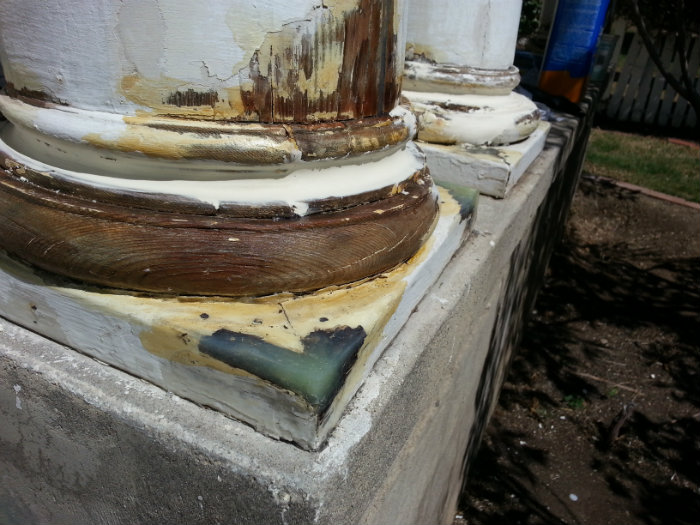Epoxy for Wood Repair
/It starts out in two parts, combines to become a caulk-like substance, and ultimately hardens like oak: Wood repair epoxy is being used by more and more Boston Building Resources members to restore porch columns and railings that have decayed, repair rotten window sashes, and to otherwise shore up compromised wood in their homes.
Epoxy can be especially useful in repairing wood components that are difficult to access, such as a windowsill or door jamb.
What exactly is epoxy, and how does it work? It’s fundamentally different from traditional one-component wood fillers, which harden through evaporation. When the two parts of the epoxy system are mixed, a chemical reaction takes place, changing the very molecular structure of the material. The molecules of the two components cross-link with each other, making the epoxy warm to the touch, according to John Stahl, system developer at Advance Repair Technology, which makes Flex-Tec wood repair epoxy.
Another surprise for anyone familiar with evaporation-based wood fillers is that “a thicker application of epoxy, such as a baseball-size repair, will actually cure faster than a thinner one, such as a quarter-size repair,” John said. The chemical reaction builds on its own heat.
Epoxy’s two component parts are a curing agent and an epoxy resin. To avoid the most common pitfalls, focus on good wood preparation, mixing the two epoxy components thoroughly, and not overfilling. It’s also important to wear hand and eye protection and to wear old “work” clothes.
Wood preparation
First, dig out all the defective wood so Flex-Tec can bond with the part of the wood that is still strong. A good analogy is a dentist filling a cavity. To economize, big patches can be backfilled with wood pieces. Next, brush on Primatrate, a two-part epoxy primer that is absorbed into the wood. Primatrate is not a fungicide; rather, it penetrates into the wood to enhance the bond with the filler material.
Mix thoroughly
Just as when you’re baking a cake, it’s vital to combine the ingredients completely to get a good result. Work cleanly. Scrape the excess off the knife and mix it back in. Use a container that does not have corners, and mix until it has a uniform consistency to avoid pockets of uncured product. You can’t over-mix. Once it’s been mixed, spread it on to fill the damaged area.
Don’t overfill
Flex-Tec won’t shrink, and it doesn’t sand like spackle—it takes some serious elbow grease to sand, like hardwood. Time spent sculpting the product will pay off when it comes time to sand. Inexpensive plastic putty knives can be used to shape and sculpt. One of Flex-Tec’s desirable qualities is that it won’t sag or drip, but holds the shape you give it.
Using epoxy to repair old wood is often far less expensive than replacing it. Plus, homeowners may be able to take on the job themselves rather than calling a contractor. Savings are especially pronounced with architectural oddities like a custom door or curved window sash. One contractor recalled getting a quote on a replacement curved window sash—an eye-popping $1,400, without glass!
Window sashes made with old-growth wood may look like they need to be replaced if the joints are rotten, but it’s actually a fairly easy repair. By using epoxy to repair a window that is a hundred years old, you can add another hundred years of life.

